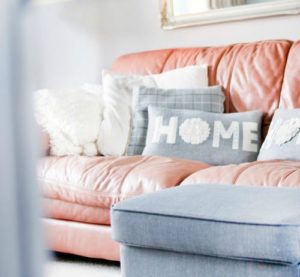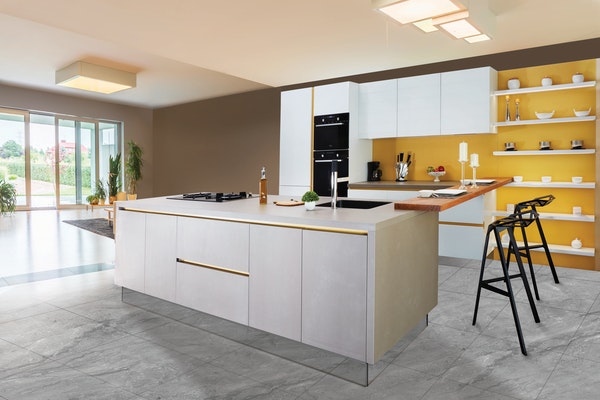
Homeowners Insurance When You Downsize
The basic homeowner’s insurance policy hasn’t changed
Homeowners insurance still covers you against loss of your property or any liability due to accidents that happen to others while they’re on your property. Your coverage is fully described in your policy, which acts as a contract between you and the insurance company. You’ll pay a premium for the coverage for a stated period of time.
The ways deductibles work hasn’t changed. You’ll still pay the deductible amount before insurance will pay for the rest of the loss.
And what you’re covering hasn’t changed. Your home and property are covered against theft or loss by fire, tornado, or other covered cause. That would include any outbuildings like garages, sheds, gazebos, etc.
That coverage would include rebuilding/replacing structures damaged by covered causes. Depending on the coverage you purchase, the extent of the damage and local codes, the insurance company will pay for some or all of the damage.
You’re also covered for any damage that might be done to visitors physically or their property while on your premises. Typically these damages are caused by falls or other accidents where you bear some responsibility and are considered liable.
What about coverage for stuff?
Homeowners insurance also covers your possessions, up to a point. Your policy likely will have a maximum amount that they cover. Often it’s a percentage of the value of the property.
That can pose a problem for you for two reasons. First, for years, you’ve been accumulating possessions, and they are often more expensive as you’ve become wealthier. This is especially true if you’ve been collecting. The dollar amount that you’ve accumulated in any category (say jewelry) could exceed the maximum coverage for that category or the total amount of your possessions could exceed the policy maximum.
The second problem is that your downsized home is likely to be worth less than your prior home. Therefore, the personal possession coverage (which is a percentage of the policy amount) will be less than before. That shrinks both the total and category coverage amounts.
You can correct the problem by purchasing a rider to increase the coverage on your possessions.
Liability coverage
Your homeowner’s policy also covers you if someone gets hurt on your property. That’s the liability portion of the policy.
Liability could be the greatest financial risk to you. Someone getting hurt on your property could require hundreds of thousands of dollars of medical treatment and perhaps even help for their lifetime. Your homeowner’s policy will have limits as to how much they’ll cover. Without sufficient liability coverage, the money you’ve saved for a comfortable retirement could be at risk. To increase your liability coverage, you can purchase an “umbrella policy” with a limit of $1 million or more.
Additional living expenses
Your homeowner’s policy not only covers your home but if you need to move out while it’s being repaired/replaced, you’ll receive payment for some or all of the additional living expenses you’ll incur. You can expect your policy to specify a certain daily limit of expenses.
You may require a different type of homeowners policy
If you’ve chosen to downsize, you might need a homeowners policy that’s appropriate for an apartment, condo, mobile home, or multiple family dwelling.
The HO-3 is the standard policy for single-family homes. If you’ve moved to a multi-family home, you’ll want the appropriate endorsement added.
Mobile home owners will need an HO-2 policy. Coverage is similar to HO-3 with some differences tailored to mobile homes.
If you’ve chosen to rent, the HO-4 policy will be your choice. Your possessions are covered like the HO-3. You’re also covered against third-party liability losses.
Condominium and Co-Op owners will need an HO-6 policy. Coverage is for the portion of the building that the policyholder owns and also for possessions as in the HO-3, liability for others, and additional living expenses.
How much is your stuff worth?
That’s a good question. Depending on what your policy says, it can be worth a lot or not much at all.
That’s because your basic policy only pays you what an item is worth today. Therefore, that 55″ flat screen that you bought three years ago is probably only worth about $50 today if it’s stolen. Your $1500 laptop? Maybe $100. You get the idea. It’s what you would get for an item if you sold it today. That’s called “actual cash value,” which usually isn’t nearly what it would cost to replace it. You’ll probably want either “Replacement cost” or “Guaranteed/extended replacement cost” coverage.
Replacement cost coverage will pay you to “repair, rebuild or replace losses” without any deduction for usage. If your computer is stolen, you’ll get a replacement with similar power, speed, and features.
The guaranteed/extended replacement cost not only covers possessions at replacement cost, but it will pay to rebuild your home as it was prior to the damage, even if that loss is greater than your policy limits.
There’s a fourth type of coverage that applies mostly to older homes. It’s called “ordinance law” and will pay to repair/rebuild your home up to current code standards, even if that amount is greater than the policy limit.
Did you review your policy when you downsized?
It’s easy to do. Downsizing takes a lot of time and energy. As long as you have similar coverage to your old house, you should be fine. At least that’s what you tell yourself.
However, experts say that you should review your homeowner’s policy at least annually to make sure that you have the proper coverages and aren’t paying too much for that coverage. This is especially true when you change residences.
How much should homeowners insurance cost?
You expected that when you downsized, your homeowner’s insurance would become less costly. But, do you know that you’re getting a good deal? The only way to know for sure is to compare rates on the same coverage with different insurance companies. No one company will be lowest for all coverages, locations, and home values.
To get a ballpark estimate, divide the value of your home by $1k. Then multiply that by $3.50. For example, if your home was worth $100k, you’d multiply 100 x $3.50, which equals $350. But, again, that’s a rough estimate. Your premium will vary based on your coverage selection, the location of your home, and its value.
Many homeowners neglect to check their policy
By some industry estimates, 40% of homeowners haven’t reviewed their policy in two years or more. And many of them when they did review their policy found that they had the wrong coverage or were paying too much for their coverage. (source: Bankrate.com)
Paying too much for your coverage can be expensive, but having the wrong coverage can be devastating. After a fire or theft is not the time to find out that you don’t have enough insurance to rebuild or replace what you’ve lost.
Leveraging downsizing
When you’re downsizing, it seems like you have a million things to do, and to some extent, that’s true. You do have a lot on your plate, but making sure that you have the right homeowner’s coverage for your new home is important. In fact, it’s probably one of the most important things you’ll do as you downsize.
Author Bio: Gary Foreman is a former financial planner and purchasing manager who founded The Dollar Stretcher.com website and newsletters. Gary is also a regular contributor to Talking Cents blog.
If you’re struggling to pay off debt, ACCC can help. Schedule a free credit counseling session with us today.





